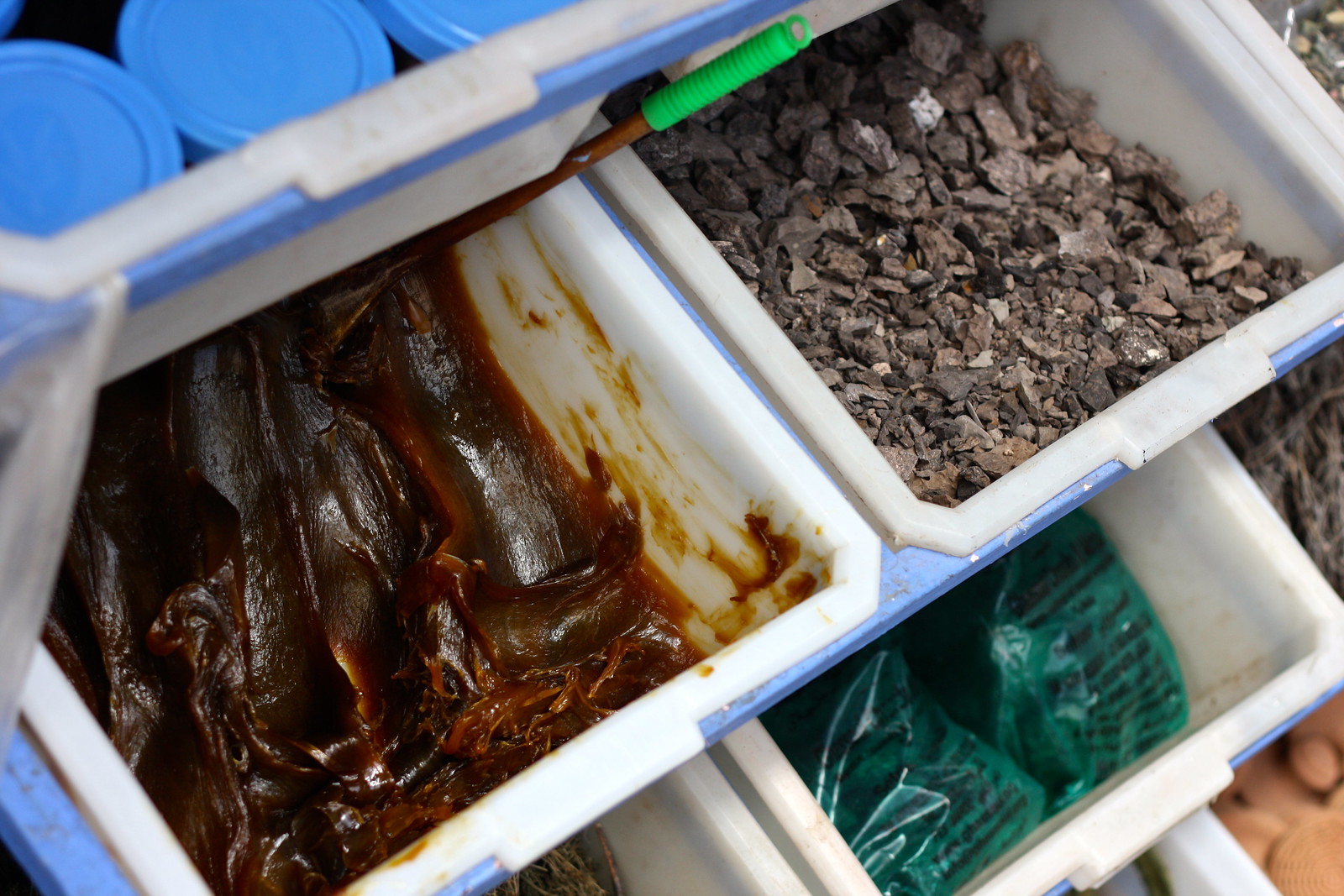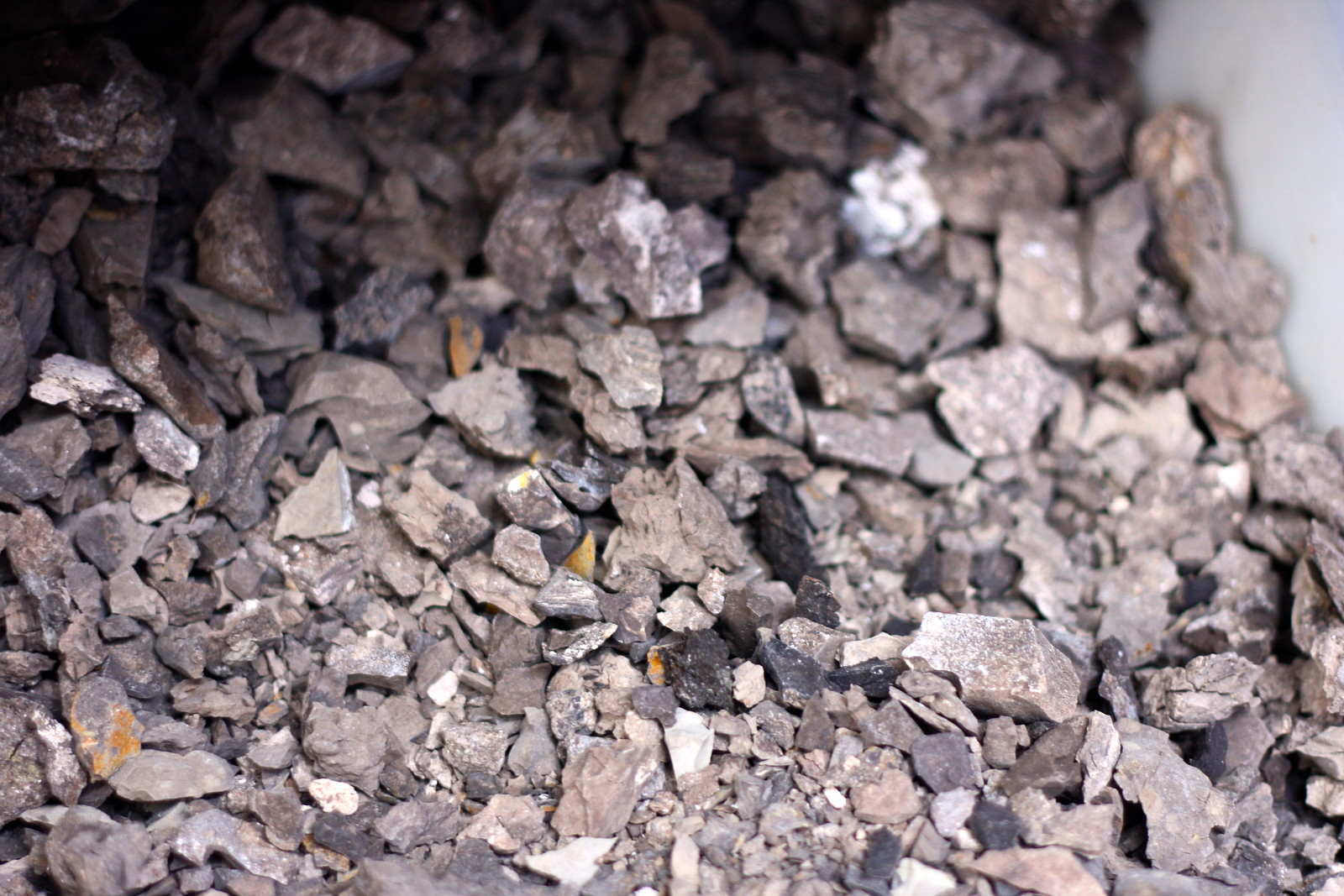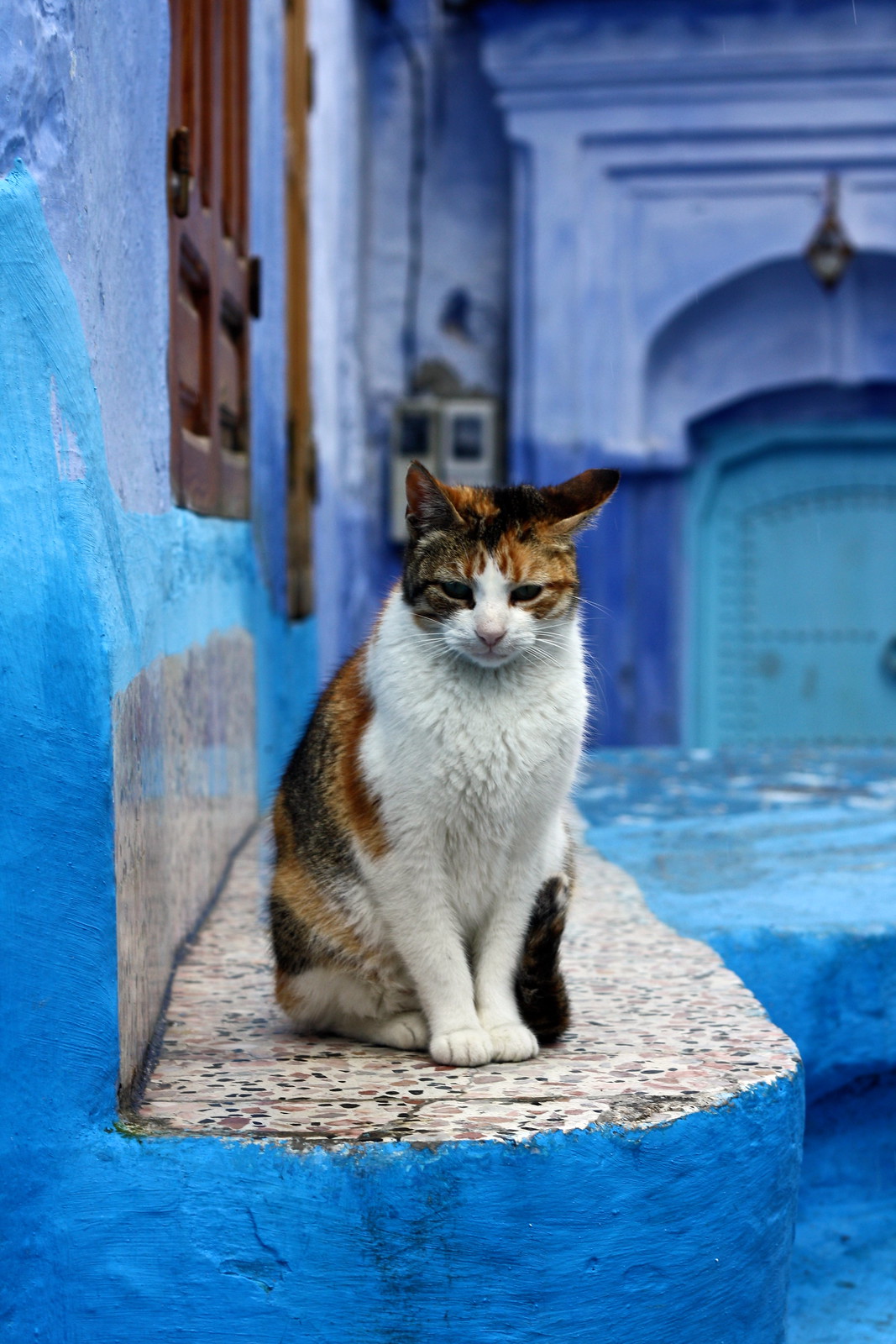How to Go to a Moroccan Hammam (Public Bath)
My trip to Morocco for Easter vacation was one where I went outside of my comfort zone a lot—even if it was with the help of the tourist trail. I had to manage daily life with a language I barely spoke (French) and one I didn’t at all (Arabic); there was absolutely no question I was a foreigner, being Christian, white, and non-fluent in any of Moroccan’s languages; and I basically winged transportation day by day, be it trains, buses, urban or interurban taxis.
One of the things I wanted to do to push myself out of my comfort zone and to *ahem* immerse myself in Morocco was to bathe in a traditional hammam, or public bath. Ideally, I wanted to try out a hammam in each of the three cities I would stay at (Fez, Meknes, Chefchaouen), but because it’s such a time-consuming process and I didn’t have much down time in the first two cities, I didn’t end up bathing (I did shower, though!) until I got to Chefchaouen.
I was a little uneasy about doing this whole public-bathing thing out on my own, especially since there is this whole defined ritual with special soaps and often a you-scratch-my-back-I’ll-scratch-yours vibe when it comes to cleaning your back. Thankfully, I ran into a guy from Chile named Antonio at my hostel (yay for speaking Spanish!) and we realized we both wanted to try out the hammam, so—after wandering through Chefchaouen’s blue medina for him to pick up a scrubby and getting 1.5-liter water bottles for us both—we mustered up our courage and entered the hammam at dusk.
Inside, there was a guardian/receptionist who took our money for the bath experience (there were also guys there taking showers in the stalls which were also there). At this particular establishment, men could bathe in the morning and in the late evening, with the ladies going in the afternoon. We went at night—no problem.
It was a little awkward trying to communicate in a mix of French, Spanish, and English but the guy who was selling orange juice (and also pushing us to pay for a massage) understood what we wanted to do, let us borrow some buckets, and would turn the water on for us.
In the foyer/changing room, we had to strip down to our undies/swimsuits and flip flops and stow our bags into cubbie holes. And then it began.
The orange-juicer/masseur filled a deep basin in the corner with hot water and then just left us in the bath room to fend for ourselves. Thankfully, I had done reading on the Internet before arriving (see below), so I knew the general bathing ritual, although in the end it didn’t really matter since there were no other Moroccans doing the traditional bathing that late at night. Perhaps more would have been there in the morning?
Caveat: from what I’ve read, there are supposed to be different rooms with varying temperatures of water, and with taps distributed across the walls with a central, sloped drain. I felt like my experience—while certainly authentic and everything—wasn’t necessarily typical in terms of the structure. I was looking around for all these different rooms but there was only a single one.
The massage guy gave us each a small and a big bucket—the big one to fill up for a personal water stash, and the small one for pouring and rinsing.
Back in the changing room/foyer, we returned our buckets and got ready to leave. My Chilean friend straight-up dropped his drawers to change out of his wet swimsuit, which alarmed the guardian, who spoke up with an “¡amigo! … ¡amigo!” I don’t think, though, that Antonio realized he had committed a Moroccan faux pas, but at the same time it wasn’t a big deal because he put his clothes on quickly and the guardian didn’t get angry. So the lesson here is don’t get butt naked.
This made me even more anxious, because I had only brought a tiny quick-drying travel towel which j u s t b a r e l y covered the important parts, leaving a deep slit going up the side of my thigh. Let me just say it was one of the most awkward, tricky experiences of my life trying to drag off clingy, wet travel boxer briefs and pull on dry undies with one hand—all the while trying to keep a skimpy towel from falling off my derrière and scandalizing Moroccan men.
Antonio and I declined the fresh-squeezed orange juice (though it was tempting), picked up our bags, and paid our dues to the guardian. I probably drank about a liter of water on the way back to the hostel, but I felt as squeaky-clean as ever. It had been a very memorable experience for my last night in the country. Plus, the actual act of public bathing hadn’t been too terrifying…although I almost wish I could have done it with other Moroccan men so they could have shown me the ropes.
Regardless, I found out that the whole going-out-of-your-comfort-zone thing isn’t so bad after all. In fact, it was quite refreshing!
Have you ever experienced an Arab or Turkish bath? Would this take you too far out of your comfort zone or would you feel comfortable washing up in the presence of others—especially people who don’t speak your language? Discuss below!
 |
| Douche et Bain Barakat, Chefchaouen (“Barakat Shower & Bath”) |
One of the things I wanted to do to push myself out of my comfort zone and to *ahem* immerse myself in Morocco was to bathe in a traditional hammam, or public bath. Ideally, I wanted to try out a hammam in each of the three cities I would stay at (Fez, Meknes, Chefchaouen), but because it’s such a time-consuming process and I didn’t have much down time in the first two cities, I didn’t end up bathing (I did shower, though!) until I got to Chefchaouen.
I was a little uneasy about doing this whole public-bathing thing out on my own, especially since there is this whole defined ritual with special soaps and often a you-scratch-my-back-I’ll-scratch-yours vibe when it comes to cleaning your back. Thankfully, I ran into a guy from Chile named Antonio at my hostel (yay for speaking Spanish!) and we realized we both wanted to try out the hammam, so—after wandering through Chefchaouen’s blue medina for him to pick up a scrubby and getting 1.5-liter water bottles for us both—we mustered up our courage and entered the hammam at dusk.
What to bring with you
 |
| Merchandise from a soap shop |
- shampoo = called ghassoul, this lava-based liquid is sold in dry, rocky form
- soap = called savon noir or savon beldi, this olive oil-based gel is sold by the scoop or in cute little jars
- loofah = called a kis, this is basically an exfoliating mitten with an elastic band to keep it on your hand
- shower clothes = swimsuit, boxers, underwear, bikini bottom, something to keep that part of your body covered
- shower shoes = I used flip flops
- towel = large enough to cover your body so you can wiggle off your soaked bathing garment of choice and put on clean undies without offending everyone
- bags = one to carry your towel and clean clothes and another to take in with you with your soap, kis, etc. (and to put your wet shower clothes in afterward)
- water bottle = the heat makes you sweat, so
- money = some dirham coins in small denominations; the bathing cost 10dh and I tipped the receptionist guy for watching the bags
What to do when you arrive
 |
| Kis loofah/scrubby mitten |
Inside, there was a guardian/receptionist who took our money for the bath experience (there were also guys there taking showers in the stalls which were also there). At this particular establishment, men could bathe in the morning and in the late evening, with the ladies going in the afternoon. We went at night—no problem.
It was a little awkward trying to communicate in a mix of French, Spanish, and English but the guy who was selling orange juice (and also pushing us to pay for a massage) understood what we wanted to do, let us borrow some buckets, and would turn the water on for us.
In the foyer/changing room, we had to strip down to our undies/swimsuits and flip flops and stow our bags into cubbie holes. And then it began.
In the baths
 |
| Ghassoul shampoo |
The orange-juicer/masseur filled a deep basin in the corner with hot water and then just left us in the bath room to fend for ourselves. Thankfully, I had done reading on the Internet before arriving (see below), so I knew the general bathing ritual, although in the end it didn’t really matter since there were no other Moroccans doing the traditional bathing that late at night. Perhaps more would have been there in the morning?
Caveat: from what I’ve read, there are supposed to be different rooms with varying temperatures of water, and with taps distributed across the walls with a central, sloped drain. I felt like my experience—while certainly authentic and everything—wasn’t necessarily typical in terms of the structure. I was looking around for all these different rooms but there was only a single one.
The massage guy gave us each a small and a big bucket—the big one to fill up for a personal water stash, and the small one for pouring and rinsing.
 |
| Gratuitous cat picture, because cats |
- Antonio and I sat on a tiled bench that ran around the room and did an initial rinse with warm water. Ah, refreshing.
- I took some of the ghassoul (lava shampoo) and awkwardly tried to make it into a paste in my hands, which basically ended with me rubbing a mix of mud and rocks on my hair. This was a little harder for Antonio, who had longer hair—and it didn’t make much of a lather at all. You’re supposed to let it sit for 10 minutes so it can work its magic on your scalp. Or something.
- While the shampoo (excuse me, lava) is sitting, the next step was to pinch off some of the gel-like savon beldi (olive oil soap) and start lathering up my body. It had a pleasant smell and I could feel the little exfoliating bits spreading across my skin.
- Next step was rinsing off the soap and shampoo. Then came the getting-squeaky-clean part, which involved putting the kis on my hand and going to town. The blogs and articles I read said to vigorously scrub your arms, legs, etc. until the skin “rolls”—yes, until dead skin starts to come off. Gross, but whatevz. I scrubbed and scrubbed and successfully rolled skin off of my trunk and thighs—my arms not so much. Once one patch of skin had turned red from the scrubbing, I moved on to another. This step took the longest and left me pretty tired from all the work! Antonio and I scrubbed each others backs, but in the medina they sold a belt or slingshot-looking kis that you could use with two hands to rub across your own back. Only for the experienced hammam-user, though.
- One final rinse to get off the, uh, dead skin.
When you leave
 |
| Savon noir soap |
Back in the changing room/foyer, we returned our buckets and got ready to leave. My Chilean friend straight-up dropped his drawers to change out of his wet swimsuit, which alarmed the guardian, who spoke up with an “¡amigo! … ¡amigo!” I don’t think, though, that Antonio realized he had committed a Moroccan faux pas, but at the same time it wasn’t a big deal because he put his clothes on quickly and the guardian didn’t get angry. So the lesson here is don’t get butt naked.
This made me even more anxious, because I had only brought a tiny quick-drying travel towel which j u s t b a r e l y covered the important parts, leaving a deep slit going up the side of my thigh. Let me just say it was one of the most awkward, tricky experiences of my life trying to drag off clingy, wet travel boxer briefs and pull on dry undies with one hand—all the while trying to keep a skimpy towel from falling off my derrière and scandalizing Moroccan men.
Antonio and I declined the fresh-squeezed orange juice (though it was tempting), picked up our bags, and paid our dues to the guardian. I probably drank about a liter of water on the way back to the hostel, but I felt as squeaky-clean as ever. It had been a very memorable experience for my last night in the country. Plus, the actual act of public bathing hadn’t been too terrifying…although I almost wish I could have done it with other Moroccan men so they could have shown me the ropes.
Regardless, I found out that the whole going-out-of-your-comfort-zone thing isn’t so bad after all. In fact, it was quite refreshing!
Further reading
- “How to visit a Moroccan hammam? and what to expect from it?” by Rachid Oubasslam
- “Morocco #1: The Hammam Experience” by Zora O’Neill on Roving Gastronome
- “My Day at the Hammam,” by Nicole Melancon on Third Eye Mom
- “Public Steam Baths (Hammam) in Morocco and Tunisia,” by Anouk Zijlma, About.com
- “Unwritten Rules of the Hammam” on Fesmedina.com
- “Visiting a hammam in Morocco,” The View from Morocco
Have you ever experienced an Arab or Turkish bath? Would this take you too far out of your comfort zone or would you feel comfortable washing up in the presence of others—especially people who don’t speak your language? Discuss below!
